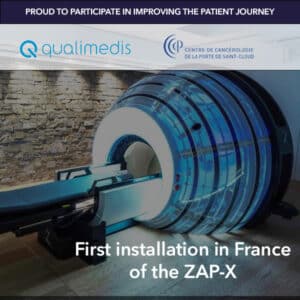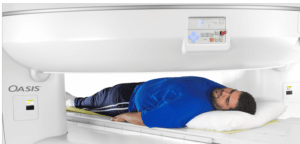The month of October, as every year since 1985, is marked by the “Pink October” operation. This annual international communication campaign is designed to raise awareness of breast cancer screening and to raise funds for research. This is an opportunity to come back to the role of the public sector and to the adaptation of public purchasing to new challenges, also during the Journées Francophones de la Radiologie (JFR) in Paris.
The French cancer screening program uses existing medical structures: mammograms are performed in public and private radiology practices. Many public purchasers (health care institutions, local authorities, etc.) are involved in the acquisition and deployment of digital mammography solutions. They must therefore combine medical and economic issues with health (quality control), budgetary, accounting and legal obligations (Public Order Code). The challenges are many, not only for public purchasers, but also for the entire value chain: lawyers, accountants, etc.
Taking into account the growing and indispensable innovations
The January 15, 2020 decision on the quality control of digital mammography facilities came into effect on January 22, 2021. This decision is more comprehensive than the amended 2006 decision. It now includes tomosynthesis and aims to limit the use of the least efficient facilities in the organized breast cancer screening program. The objective is to provide patients with superior image quality while limiting the dose received.
This decision has already had a significant impact on the market, leading some centers or departments to anticipate the replacement of mammography equipment that has become “non-compliant. Some equipment acquired in the public sector has simply become unusable before it has even been amortized! This raises the question of the profitability of this approach to investment, as well as the question of the rapid and unplanned mobilization of credit to acquire a newer solution that meets regulatory requirements. Beyond this evolution of the regulation, the question of investment, ownership and amortization of such technologies naturally arises again for the public purchaser.
Maintenance and development of mammography in the public sector
The mammography sector is linked to technological developments and, even more so, to fleet management based on a full-cost approach and on an approach linked to the patient pathway. This approach breaks with the “sacrosanct” model of investment and ownership. While the private sector can integrate this context more easily, public purchasers must deal with rules that are not always adapted to a full-cost approach. For example, the delay in public purchasing in the use of rental or usage-based solutions, or the rules for recovering VAT (FCTVA) applied to local authorities, which mathematically generate a significant difference between a purchase and a financial lease!
The circular of February 26, 2002 on the rules for charging local public sector expenditure defines capital expenditure as expenditure that results in the entry of an asset of a certain size into the assets of the local authority and that is intended to remain there. In this way, the performance of care in the public sector is no longer based solely on the intrinsic characteristics of the mammography unit, but on :
- Reliability and reproducibility of diagnosis with the emergence of artificial intelligence, particularly in the early detection of lesions.
- The attractiveness of the system for senologists (advanced technologies, optimization of the patient pathway, automation of tasks, management and security of medical data).
- Data management and secure archiving in the long term.
- The durability, availability and scalability of the installation provided by a global manufacturer (upgrades, spare parts, etc.)
The value of use, an unavoidable orientation
An analysis of the constraints and expectations in this sector of activity demonstrates the need to change the historical approach to the purchase of mammography equipment. The contextual factors mentioned above are likely to make it potentially obsolete in the near future. The objective of public purchasing has always been to serve the general interest and to guarantee the efficiency of the service provided. Breast cancer screening, which was so popular this October, is a striking example. Ensuring the same quality of diagnosis and the same level of care is at the heart of the French program, whether the mammogram is performed in the private or public sector.
Encouraging the introduction and deployment of the best innovation (hardware, software, services) is the responsibility of public authorities. In the medical sector, but more broadly in all areas of public procurement, they must now consider how to facilitate access to these new business models, both by raising awareness and training players, and by changing accounting and budgetary rules that may have become obsolete or even contradict the objectives of public service efficiency.







